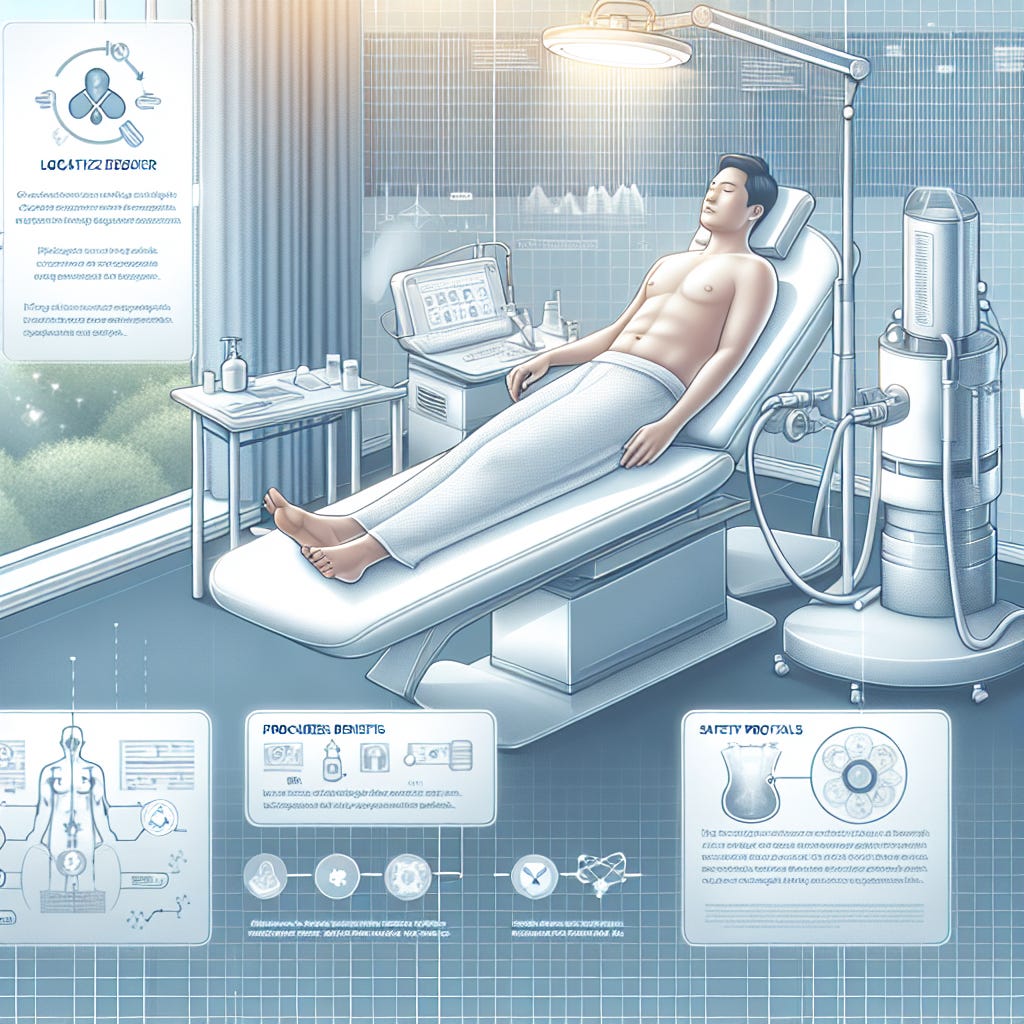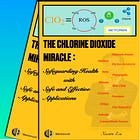This excerpt is from my book, "The Chlorine Dioxide Miracle: Safeguarding Health with Safe and Effective Applications." If you're interested in chlorine dioxide therapy, you can purchase the book here:
17.1 Chlorine Dioxide and Fat Reduction
Localized fat reduction can be considered as a potential method for weight loss treatment. It involves various medical procedures, including medication and device-based treatments. These techniques can be used individually or in combination to enhance effectiveness and cater to individual needs.
Medication treatment primarily involves the injection of substances for fat reduction. One well-known medication is a mixture of phosphatidylcholine and deoxycholic acid, which can be directly injected into areas with localized fat deposits. These medications disrupt the cell membranes of fat cells, leading to the release of their contents, which are then metabolized by the body. Multiple injections may be required during the treatment process, with a recovery period needed after each session. Medication treatment is non-invasive and does not require surgery, but it may take several weeks to months for the results to become apparent, and its effectiveness may be limited for large areas of fat accumulation.
Device-based methods offer a diverse range of options for localized fat reduction. These methods include cryolipolysis (fat freezing), laser lipolysis, high-intensity focused ultrasound (HIFU), and radiofrequency (RF) technology. These techniques utilize specific types of energy to destroy fat cells without damaging surrounding tissues.
Cryolipolysis involves lowering the temperature of fat cells to induce apoptosis, which is then naturally cleared by the body. Laser lipolysis uses specific wavelengths of light energy to heat and destroy fat cells. HIFU concentrates ultrasound energy on the fat tissue, generating a thermal effect that leads to fat cell death. RF treatment generates heat through radiofrequency energy, altering the structure and metabolism of fat cells. These device-based methods are typically performed under the supervision of medical professionals.
Localized fat reduction using these devices often yields faster results, with some methods like cryolipolysis showing effects within a few weeks after a single treatment. However, these methods may also have side effects such as temporary redness, pain, or altered skin sensation. Additionally, these treatments generally require specialized equipment and expertise making them relatively costly.
In the section discussing the use of chlorine dioxide for cancer treatment, we learned that chlorine dioxide can efficiently and safely break down tumors. Given the relative simplicity of fat tissue, it can be inferred that chlorine dioxide could also effectively and safely dissolve localized fat. When targeting localized fat for dissolution, chlorine dioxide be directly injected into the targeted fat area.
I conducted a self-experiment using chlorine dioxide to dissolve localized fat, as mentioned in the previous section. In my experiment, I injected the subcutaneous fat on the left side of my abdomen five times and the fat under my eye bags twice. After the injections, I a significant collapse in the injected areas, confirming the effectiveness of chlorine dioxide in local fat dissolution.
It is important to note that fat cells differ from other functional cells as they are more akin to overgrown cells with limited functionality. After using chlorine dioxide to dissolve localized fat, the rate of cell regeneration in that area is slower than the normal wound healing process. Therefore, the use of chlorine dioxide for localized fat dissolution can be seen as a potential method for weight loss treatment.
17.2 Fat Reduction Protocol
It is important to note that the use of chlorine dioxide injection for localized fat reduction is not currently approved by any regulatory authority as a new drug. Therefore, under the current medical system, it is not recommended for anyone, including myself, to use chlorine dioxide injections for the treatment of localized fat. The information provided here should be considered as a potential design for future treatments and should not be used for actual treatment purposes.
For standard fat reduction protocols:
The preparation of chlorine dioxide injections requires specialized equipment and facilities, as well as the expertise of qualified medical professionals. The concentration of chlorine dioxide in the injection can be prepared at 8mg/mL or 15mg/mL under Good Manufacturing Practice (GMP) conditions. If approved by regulatory authorities, the chlorine dioxide injection can be directly injected into the subcutaneous fat, with the dosage not exceeding half of the total volume of subcutaneous fat. It is recommended to perform multiple injections at different points to achieve dispersion.
Self-experimentation Fat Reduction Protocol:
In special circumstances where self-experimentation is conducted, the preparation of chlorine dioxide injections can be done as follows:
(1) Dissolve 200g of sodium chlorite powder (80% purity, with the remaining 20% being sodium chloride) in 800mL of deionized water (or distilled water) to create a 16% sodium chlorite solution.
(1) Dissolve 400g of citric acid (analytical grade, 99.9% purity) in 600mL of deionized water (or distilled water) to create a 20% citric acid solution. To obtain pure chlorine dioxide, use the method of natural evaporation with distilled water absorption. Prepare a small open transparent glass cup (e.g., 30mL capacity) and a larger sealable transparent glass cup (e.g., 300mL capacity).
(2) Add approximately 30mL of distilled water to the large glass cup. Mix 10mL of each solution (sodium chlorite and citric acid) in the small glass cup, quickly place it into the large glass cup, seal it tightly, and store it in a household refrigerator. After approximately 12 hours, the liquid in the large glass cup will contain the desired chlorine dioxide injection (with a concentration of approximately 3-15mg/mL).
Due to the volatility of chlorine dioxide in water, it is generally recommended to prepare the injection on-site and use it immediately. However, if a larger quantity needs to be prepared for long-term storage, it is advised to store it in a glass bottle in a refrigerator at 2-8 degrees Celsius.
When using the injection for fat reduction, fill the syringe with the prepared injection and directly inject it into the subcutaneous fat. The dosage should not exceed half of the total volume of the injected fat. In self-experimentation scenarios where medical assistance is not available, it is important to limit the experimentation to subcutaneous fat only.






Amazing article. Thank you very much.